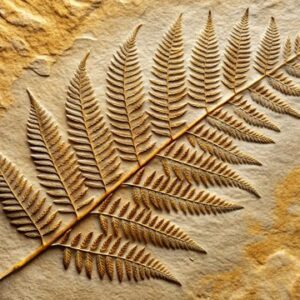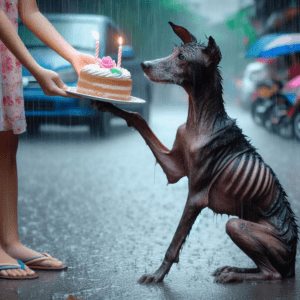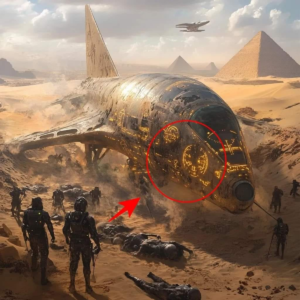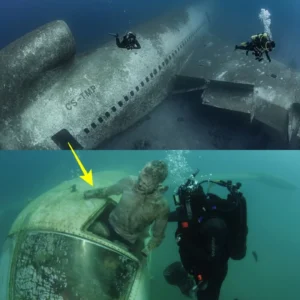**Tales of the Dead**
*Deciphering the Tarim Basin Mummies*
The Tarim Basin, China’s largest inland basin, spans an area of 530,000 square kilometers at an altitude ranging from 800 to 1,300 meters. Situated south of Xinjiang Uyghur in an independent territory between the Tian Shan Mountains, Kunlun Mountains, and Altai Mountains, the region experiences an extremely dry climate with annual precipitation less than 100 millimeters. Rainfall remains below 50 millimeters for most of the time in this vast and arid landscape. [1]
Despite challenging conditions, this region has been a crucial crossroads between the eastern and western parts of Eurasia, famously known as the Silk Road, for thousands of years. Satellite images mapping the main Silk Road routes in this region reveal that all three routes, along the north rim and south rim, circumvent the Taklimakan Desert, situated in the center of what constitutes the Tarim River basin. This suggests significant trade and cultural exchanges in this region, marked by heavy traffic along the routes. While trade explains the peculiar circumstances leading to burial sites containing the remains of Caucasoid individuals arriving in China, it does not account for the age of the mummies, dating back to the 1st and 2nd millennia BCE—centuries before documented interactions with the East.
The Tarim Basin mummies challenge accepted assumptions, providing evidence of early Western European contact with China. Archaeological findings at burial grounds further challenge historians and Chinese history, proposing the possibility of entire European communities within China, altering ideas about the origins of the original settlers. Through modern discoveries, knowledge of ancient trade routes, and linguistic studies, this research aims to investigate an initial period of exchange and, more intriguingly, the language development connecting Indo-Europeans to the Tarim Basin.
In 1970, China’s leading archaeologist, Wang Binghua, initiated a systematic search for ancient sites in the northeast corner of Xinjiang, presuming that ancient peoples would have settled along a stream. As he traveled through communities, he would inquire whether they had ever found broken bowls, wooden artifacts, or similar items. It wasn’t until 1978 that he learned of a place called Qizilchoqa, or ‘Red Hill,’ where the first mummy was discovered. Since the original discovery, hundreds of perfectly preserved, three and four-thousand-year-old mummies have been excavated from four major burial sites scattered in the arid foothills of the Tian Shan in the remote Taklamakan Desert.
Victor Mair, a professor of Chinese at the University of Pennsylvania and a collaborative investigator with Chinese scientists excavating these sites, elaborates in his journal “Ancient Mummies of the Tarim Basin” on several unique mummies encountered on expeditions. Six of these mummies will be considered in this paper to underscore the distinctly European culture of the Tarim Basin mummies.
One of the oldest mummies discovered in 1980 is the beauty of Loulan, dating back to about 1800 BCE. She was found in the northeastern corner of the Tarim Basin, buried wearing a warm cloak or shroud, a hat, boots, a wooden comb, a basket, and a winnowing tray—an ancient agricultural tool for separating grain from chaff.
**Harvesting Grain from Chaff: The Enigma of Xiaohe Beauty**
Approximately 120 kilometers to the west-southwest of Loulan in Ordek’s necropolis, situated remotely in the desert at the Small River Cemetery, excavators unearthed the Beauty of Xiaohe in a boat coffin. Archaeologists estimate that she is from the same period and culture as the Loulan beauty. The Xiaohe tombs are somewhat peculiar in that it appears as if all evidence of the society was contained within the coffins—clothes, jewelry, wooden masks, and other carvings. The graves give the appearance of being relocated to the burial ground from another area, as archaeologists have searched for hundreds of kilometers around the tomb complex and have not found any other evidence that could relate to the Xiaohe people or their lifestyle.
**Unraveling the Enigma of Xiaohe Tombs: Cryptic Coffin Variations**
Adding to the intricacy of the mystery surrounding the Xiaohe tombs are variations in coffins. In addition to wooden coffins, four clay-covered coffins were found surrounded by six to eight wooden stakes. More peculiar, however, are the six coffins containing wooden male representations marked with a red X.
One of the more well-known mummies in this paper is the charismatic Man recovered from a tomb near the village of Zaghunluq, in the central portion of the southern edge of the Tarim Basin.
**A Glimpse into the Riches: Charismatic Figures of the Past**
According to Mair, the site discussed is considerably more recent than the two mentioned above, dating back to around 600 BCE. This is evident in the clothing of Charchan Man and his family, including two wives and an infant, all buried in rich burgundy attire signifying the use of colorful dyes in textile production during this period.
Similar to Charchan Man, Yingpan Man is also adorned in brightly colored clothing. He presents an interesting case, unlike the aforementioned mummies, as he appears to have been very wealthy, and his body is not nearly as pristinely preserved. Yingpan Man’s face is covered by a white mask with a strip of gold foil across the forehead. He is clothed in elaborately embroidered Greco-Roman motifs and buried with rich trappings. This, along with his burial location along an ancient caravan trail, indicates a well-connected merchant or noble status.
**Mysteries Unveiled: Eccentricities of the Past**
A Roman merchant stands out impressively, a bit out of place, but not nearly as strange as the fourth and second-century “witches” of Subeshi. These mummies were entombed with pointed black hats resembling the iconic headgear of their sisters in medieval Europe. One of the females exhumed had been buried wearing a heavy glove, suggesting she might have hunted with a raptor. The men were no less intriguing, including a man whose head was encased in a felt helmet and another who may have been one of the world’s oldest surgery patients, indicated by the horsehair stitches creating a suture on his chest.
Among all the Caucasoid mummies, the man from Hami with a dozen hats divulges more artistic and enigmatic details.
**Revelations of European Lineage**
Unearthed at the Qizilchoqa Cemetery near Wupu, archaeologists stumbled upon an eccentric cadaver interred with a vast collection of distinctive hats. Amidst this marvelous assortment buried with him are a beret crafted from the world’s first palebinding (a technique akin to crocheting) and a Phrygian-style cap made of thick brown felt adorned with striking white ornamental stitching. These artifacts stand as compelling evidence pointing to European ancestry more than any other.
**Textile Connections Across Continents**
Likewise, plaid patterns discovered at this site utilize the same weave (diagonal twill) as those found in Celtic sites in Europe dating to around the same period, circa 1000 BCE.
The harsh climates of the Tarim Basin have naturally preserved each of these mummies, thanks to extreme aridity and the saline soils of the environment. Coupled with severely cold winters that impeded the processes of putrefaction and decomposition, nature has granted scientists and archaeologists a clear view of these ancient peoples. This perspective shares significant characteristics with European genetic traits, prompting an investigation into the reasons and routes through which Western societies found their way to China, facilitated by migration and trade.





